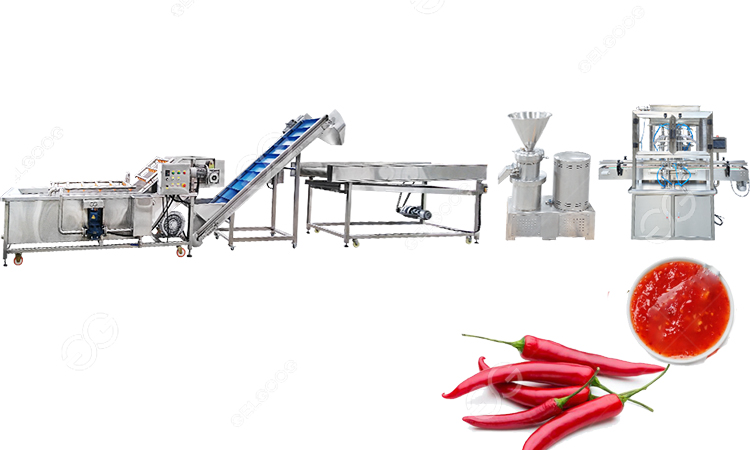Chili sauce, a beloved condiment known for its fiery kick and versatile flavor, undergoes a meticulous production process in factories to ensure quality, consistency, and safety. From the initial washing of chilies to the final filling of bottles, each step is carefully executed to create the perfect blend of heat and flavor. Let’s delve into how is chilli sauce made in factory.

1. Chili Washing:
The process begins with the arrival of fresh chili peppers at the factory. These peppers are carefully washed to remove any dirt, debris, or pesticide residues. Cleanliness is paramount at this stage to prevent any contaminants from affecting the final product’s taste and quality.
2. Grinding:
Once cleaned, the chilies are fed into grinding machines, where they are finely chopped or pureed depending on the desired texture of the sauce. Grinding releases the peppers’ essential oils and flavors, intensifying the heat and aroma characteristic of chili sauce.
3. Pre-heater:
The ground chili paste is then passed through a pre-heater, where it is heated to a specific temperature. This heating process serves multiple purposes: it helps to deactivate enzymes that could cause spoilage, enhances the sauce’s flavor profile, and prepares it for further processing.
4. Mixing and Flavoring:
At this stage, other ingredients such as vinegar, salt, sugar, and spices are added to the chili paste. The exact blend of ingredients varies depending on the recipe and brand specifications. Mixing tanks ensure that all components are thoroughly combined to achieve a harmonious flavor profile.
5. Sterilization:
Sterilization is a critical step in ensuring the safety and shelf-life of chili sauce. The mixed sauce undergoes heat treatment in sterilization equipment such as autoclaves or continuous sterilizers. This process eliminates any harmful bacteria or microorganisms while preserving the sauce’s taste and texture.
6. Filling:
Once sterilized, the chili sauce is ready for packaging. Automated filling machines carefully dispense the sauce into bottles, jars, or sachets of various sizes. Precise filling ensures that each container contains the correct amount of sauce, minimizing wastage and maintaining consistency.
7. Labeling and Packaging:
After filling, the bottles are sealed and labeled with product information, including ingredients, nutritional values, and expiry dates. Packaging may involve secondary processes such as shrink-wrapping or cartoning to prepare the products for distribution and retail display.
8. Quality Control:
Throughout the production process, rigorous quality control measures are in place to monitor the sauce’s taste, color, texture, and safety. Samples are regularly tested in on-site laboratories to ensure compliance with food safety regulations and maintain consistent product quality.
The journey from fresh chili peppers to bottled chili sauce in a factory involves a series of precise and carefully orchestrated steps. Each stage, from washing and grinding to sterilization and packaging, plays a crucial role in producing high-quality chili sauce that satisfies the taste buds of consumers worldwide. With meticulous attention to detail and adherence to strict quality standards, factories ensure that every bottle of chili sauce delivers the perfect balance of heat, flavor, and satisfaction. If you want to know more information of the chili sauce manufacturing machine, contact us now.